Reading Time: 10 minutesFreshwater fishing is one of the most common ways to enjoy the world’s beauty and make unforgettable memories with those you care about. But it’s not as simple as just throwing your line out there and waiting for a bite. You’ll want to experiment with various freshwater fishing lures to entice those fish!
There’s a huge variety of freshwater lures out there. They vary in design, look, and feel—all crafted to attract a certain species of fish under the right conditions. We anglers often find that one lure will work wonders one day, only to not produce any strikes the next day!
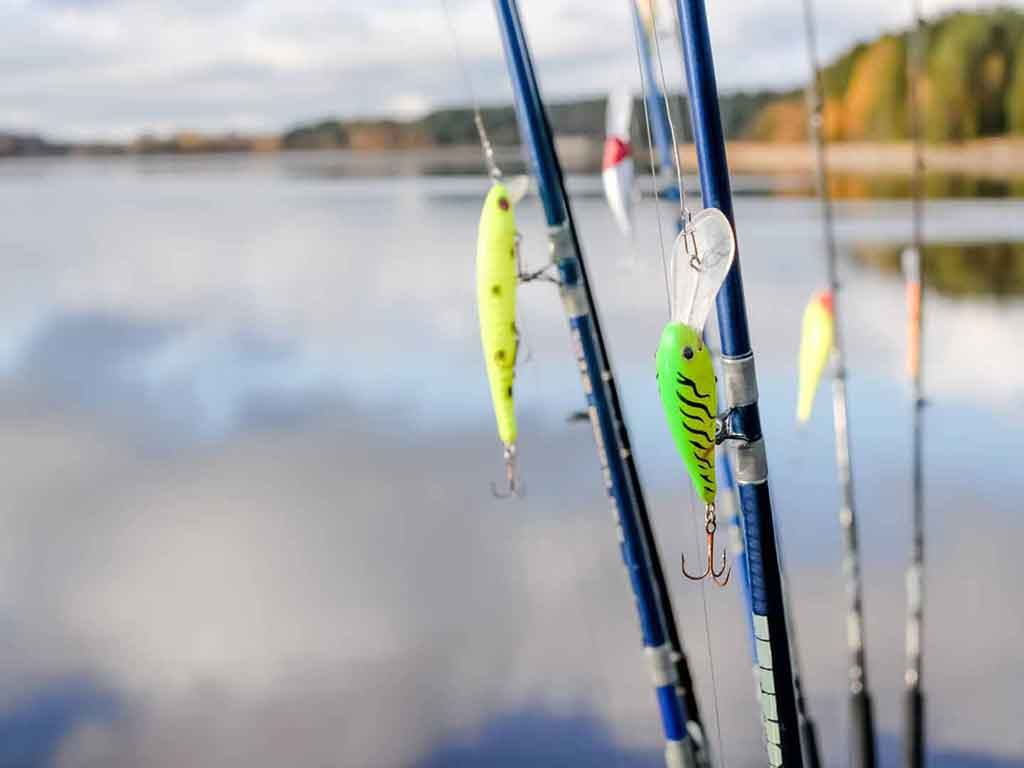
Why? Because choosing the right lure depends on a variety of factors. Think time of day, time of season, body of water, your target species’s food source, water depth, weather, angler action while reeling it in… And that’s just the start of the list.
If you’re not sure where to begin, don’t worry. This complete guide has everything you need to know about freshwater fishing lures. Let’s jump in!
Jigs: Underwater Puppeteers
Arguably the most versatile lures in an angler’s arsenal, jigs are capable of attracting a wide range of freshwater species with their subtle, life-like movements. Composed of a weighted head and a body that frequently features feathers or plastic to mimic prey, jigs challenge anglers to become puppeteers to animate them.
The Secret to Using Jigs

The key to success with jigs lies in your ability to impart life into these lures through the rod tip. Gentle lifts and drops can mimic the scuttling of a crayfish or the delicate swim of a bait fish, depending on the jig’s design and your technique. The most effective jig fishermen are those who pay close attention to the rhythm of their retrieve, adjusting their pace to match the mood and activity level of the local food sources. Figuring this out just requires trial and error!
When to Use a Jig
Jigs shine in a variety of conditions, but they’re particularly effective in colder waters where fish are less active. The subtle presentation of a jig worked slowly across the bottom or through structure, can prove irresistible even to the most lethargic fish. Spring and fall present ideal jigging conditions, especially in clearer waters where predators can spot the precise movements of the lure.
Targeted Species
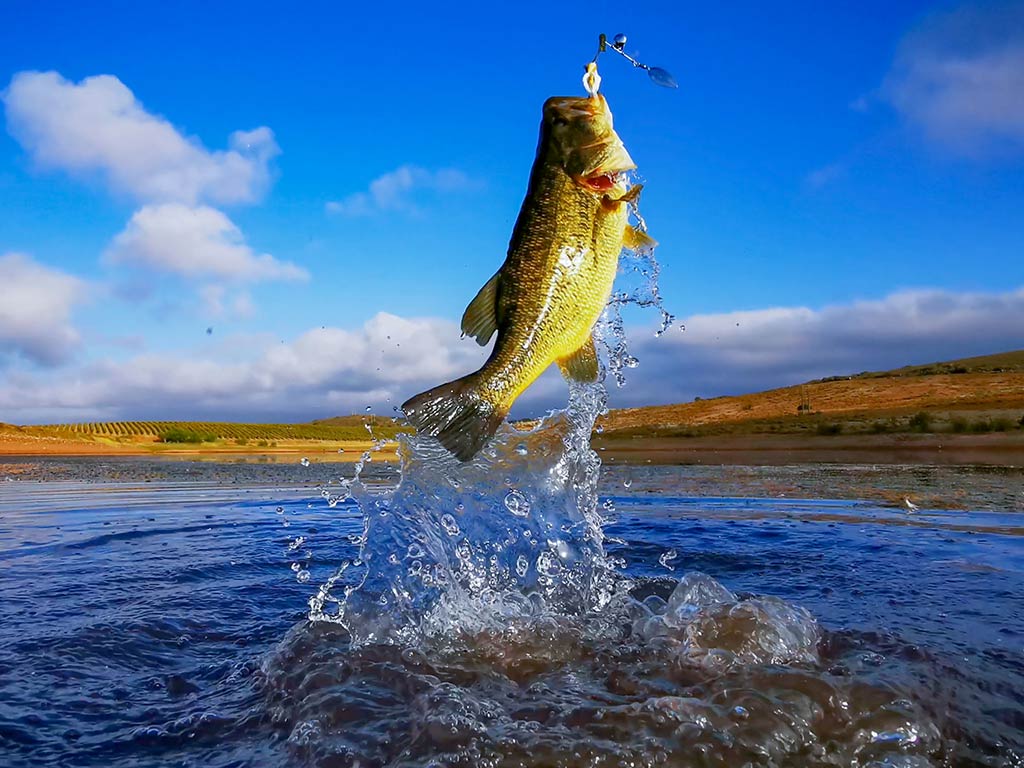
While nearly every freshwater game fish can be caught on a jig, they’re a favorite for Bass fishing. The lure’s ability to navigate through tight cover and mimic a variety of Bass prey makes it a go-to choice. Walleye anglers also tout the effectiveness of jigs, particularly when tipped with live bait or worked along drop-offs and weed edges.
Spinnerbaits Explained
With their distinctive appearance featuring one or more metal blades that spin like propellers, spinnerbaits grab the attention of fish under the water’s surface. These freshwater fishing lures are not just about the flash, though. They also produce vibrations that fish can feel through their lateral lines, making spinnerbaits irresistible
Harnessing the Power of Spin
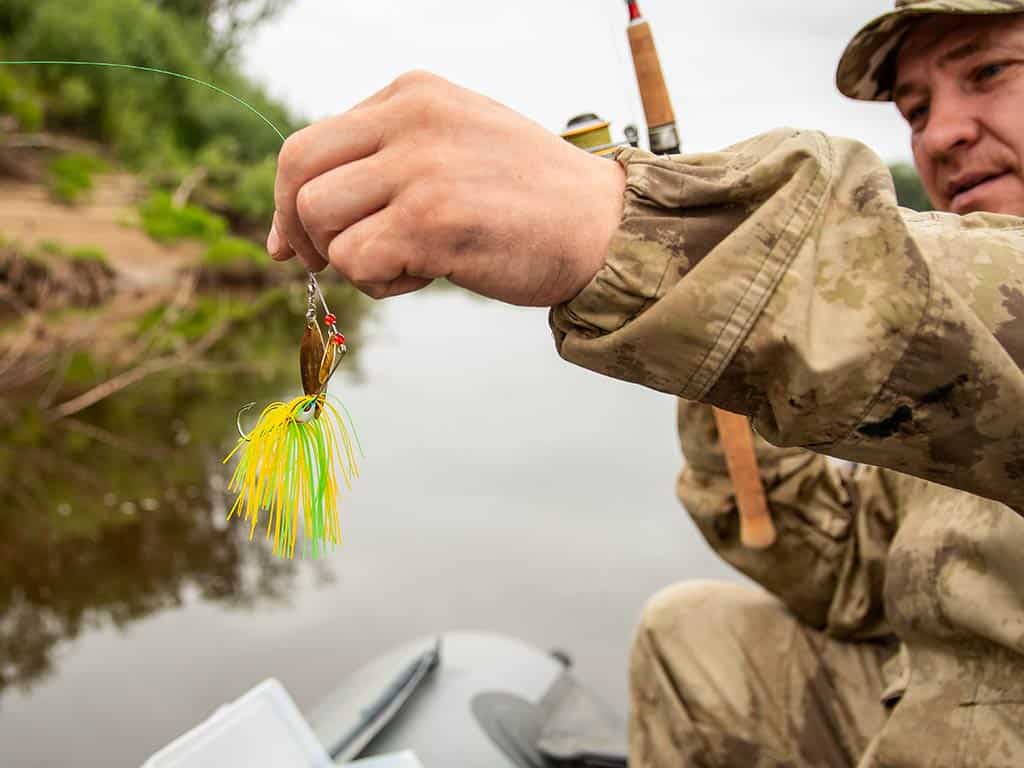
The magic of spinnerbaits lies in their ability to mimic the movement and flash of small bait fish. The spinning action of the blades creates a visual and sensory commotion that can attract fish from a distance. Anglers can manipulate spinnerbaits through various retrieves—slow rolling them near the bottom, burning them back across shallow flats, or steadily retrieving them through mid-water depths.
Optimal Conditions for Spinnerbaits
Spinnerbaits excel in a range of conditions but shine brightest in stained or murky waters where their vibration and flash can cut through the reduced visibility. They’re also particularly effective around submerged structures, weed lines, and other areas where Bass ambush prey. While you can use spinnerbaits year-round, they’re most effective in the spring and fall when fish are actively feeding in the shallows.
Targeted Species and Tactics
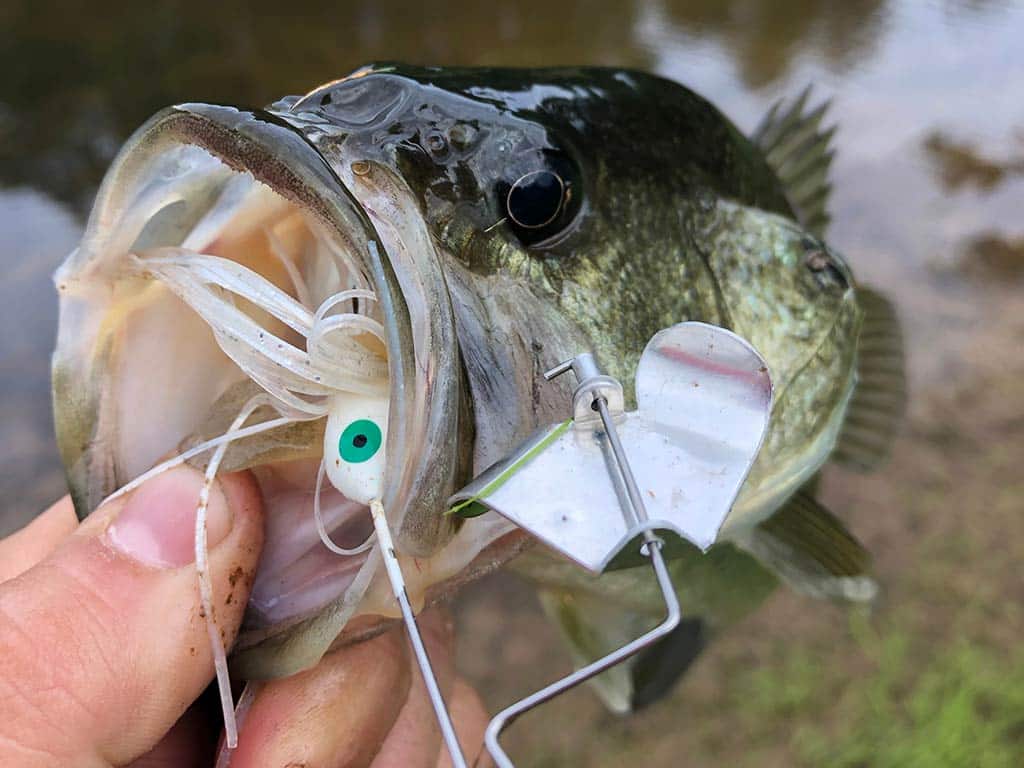
Bass, especially Largemouth Bass, are the primary targets for spinnerbait enthusiasts. The lure’s ability to cover water quickly and navigate near cover makes it a top choice for anglers looking to entice aggressive strikes. Pike and Musky are also known to fall for spinnerbaits, attracted by the lure’s sizeable profile and flashy demeanor.
Soft Plastics
Soft plastics are the chameleons of the freshwater lure world. They’re available in an almost endless variety of shapes, sizes, and colors to perfectly mimic every conceivable type of prey. From worms and crawfish to frogs and injured bait fish, you can rig these lures in numerous ways to suit different fishing scenarios. That makes them indispensable to anglers aiming for precision and versatility.
Crafting the Illusion with Soft Plastics
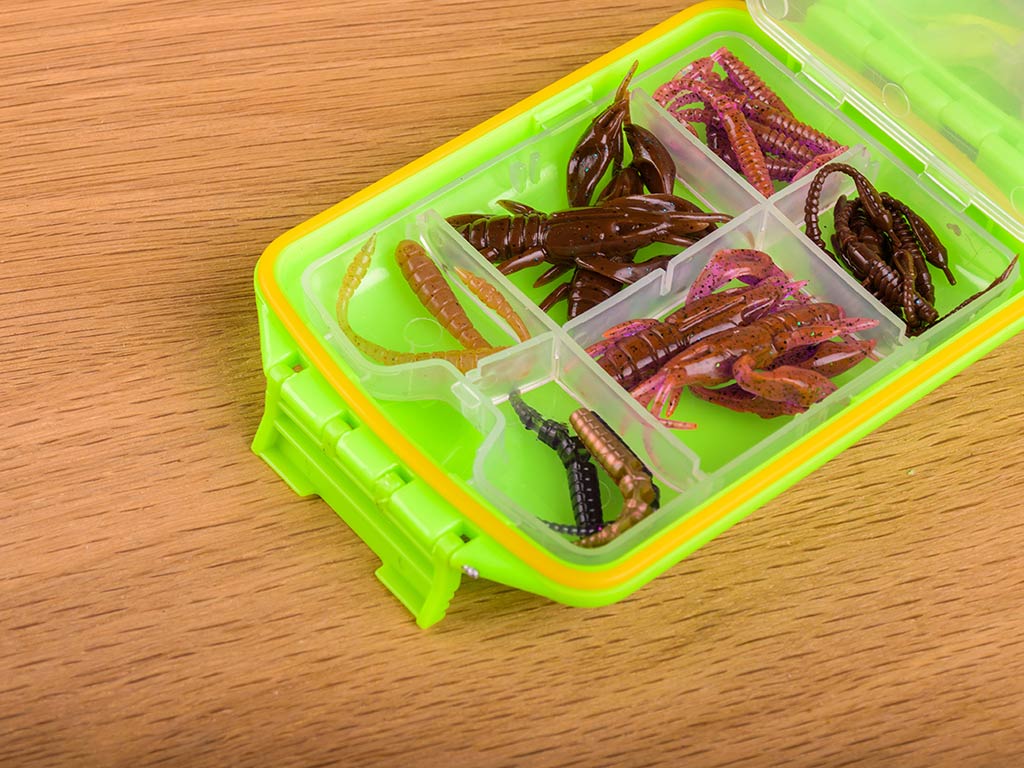
The effectiveness of soft plastics lies in their ability to closely replicate the natural movements of Bass prey. Techniques such as the Texas rig for weedless presentation, the Carolina rig for depth exploration, or the drop shot rig for pinpoint positioning allow anglers to present these lures in ways that fish find irresistible.
The key to success is in the retrieval technique. Whether it’s a slow drag on the bottom, a jerky twitch, or a steady swim, matching the lure’s action to the behavior of real prey can lead even the most cautious fish into a strike.
When and Where to Fish with Soft Plastics
Soft plastics prove their worth across a spectrum of conditions but are particularly effective in clear to moderately stained waters where their lifelike appearance and action are most appreciated. They shine in warmer temperatures when fish are more active and willing to chase down a meal. But don’t discount them in cooler waters! A slow and deliberate presentation can tempt sluggish fish into feeding.
Major Benefit: Versatility for Various Targets
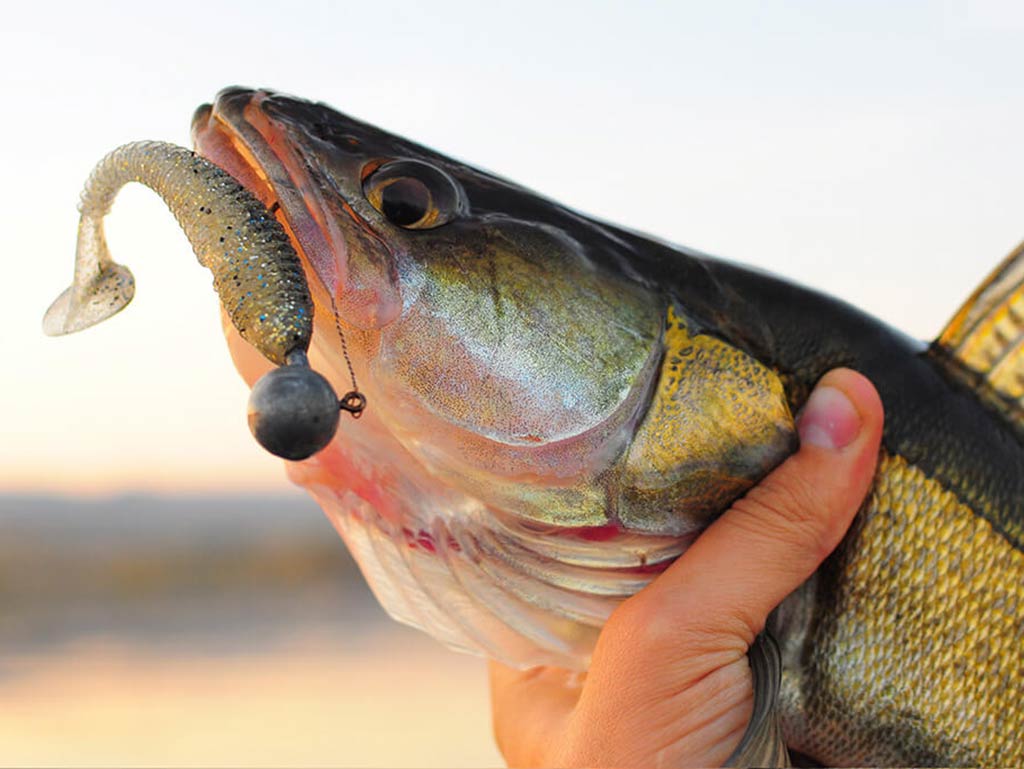
While Largemouth and Smallmouth Bass are the most common targets for soft plastics, these lures also have a place in targeting species like Walleye, Crappie, and even Pike. The key is to select a size and color profile that mimics the local forage. Don’t forget to adjust your rigging and retrieval to match the habits of the species you’re after!
Topwater Lures
Topwater lures bring a thrilling dimension to freshwater fishing, creating a spectacle on the water’s surface that’s as exciting for the angler as it is irresistible to fish. They’re known as the most popular Largemouth Bass lures and are designed to mimic the movements of prey in distress. Think frogs on the leap, insects trapped on the surface of the water, or smaller fish fleeing. In any case, each triggers instinctive strikes from predatory fish.
Animating the Surface
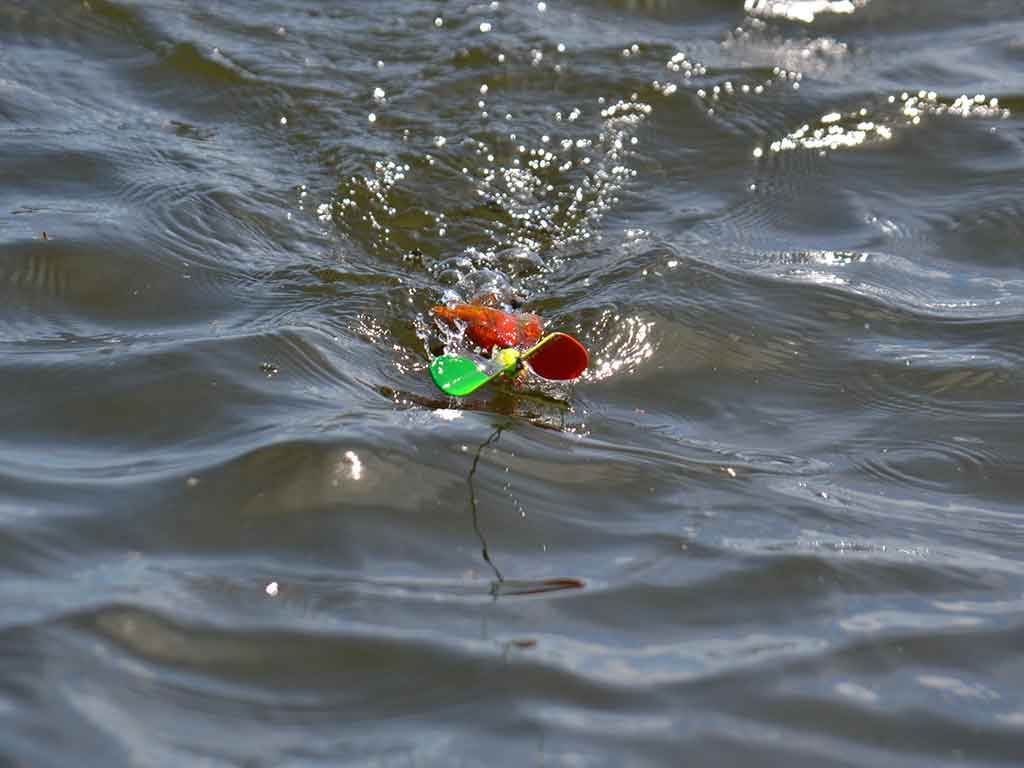
The allure of topwater lures lies in their ability to create visible and auditory disturbances on the water’s surface. These appeal directly to the aggressive tendencies of fish. Techniques vary from the gentle “walk-the-dog” action of stick baits to the chaotic splashing of poppers. Mastery over these lures requires rhythm and precision when retrieving. Get ready to turn those mechanical motions into an artful dance that breathes life into the lure!
Prime Time for Topwater Tactics
Topwater lures excel in the low-light conditions of early morning and late evening when predatory fish hunt near the surface. They’re most effective in warmer months, from late spring through early fall, when fish feed more aggressively. Use them in relatively calm and clear waters where their surface action can be seen and heard by fish below.
Species and Scenarios
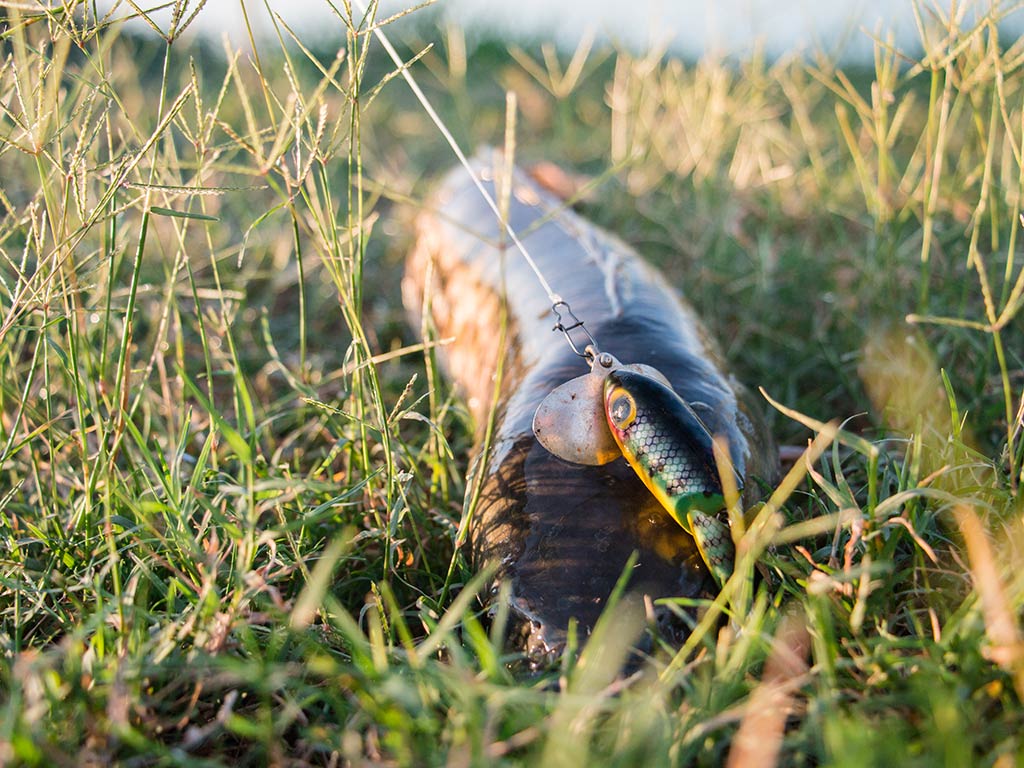
Largemouth Bass are the most frequently targeted species with topwater lures, renowned for their explosive strikes. The right topwater presentation can also entice Smallmouth Bass, Pike, Snakehead, and even Muskies. Try these freshwater lures when fishing over weed beds, along the edges of reeds, and around other surface structures where fish might be lurking.
Crankbaits: Diving into Action
Among the most dynamic tools in an angler’s tackle box, crankbaits dive deep and stir up water, mimicking the movement of fish prey. With a variety of shapes, sizes, and colors, these lures can cover vast swaths of water and depths, making them versatile allies in the search for freshwater species.
The Mechanics of Crankbaits
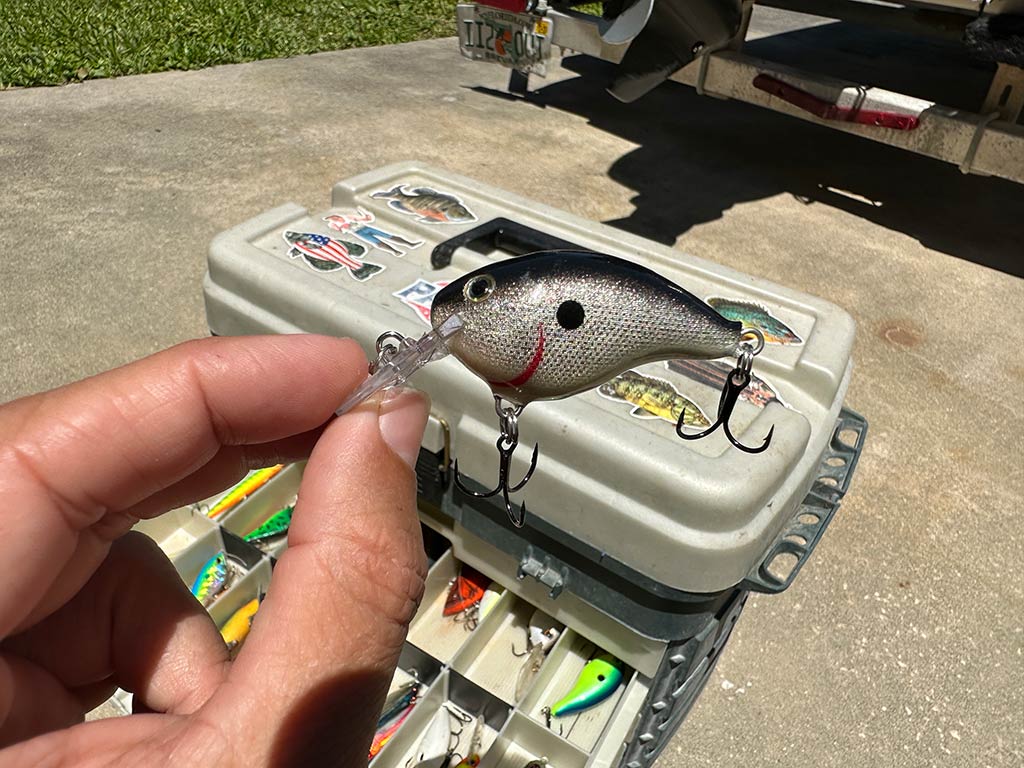
Crankbaits work through a simple yet effective mechanism. As the angler reels in, the lure’s body moves through the water. Its lip causes it to dive and wobble in a manner that simulates a swimming fish.
The depth and action of a crankbait are determined by its shape, the size and angle of the lip, and buoyancy. From shallow runners to deep divers, selecting the right crankbait for the water you’re fishing is the key to finding success.
Optimal Conditions and Techniques
Crankbaits show their true value in waters ranging from cool to warm, making them excellent choices from spring through fall. They cover a lot of water quickly and explore various depths. This makes them particularly effective in areas where fish feed on smaller bait fish. The best crankbait fishing often occurs around structures like rock piles, sunken trees, and drop-offs. Their lifelike action can tempt fish into striking.
Crankbaits for Targeted Species
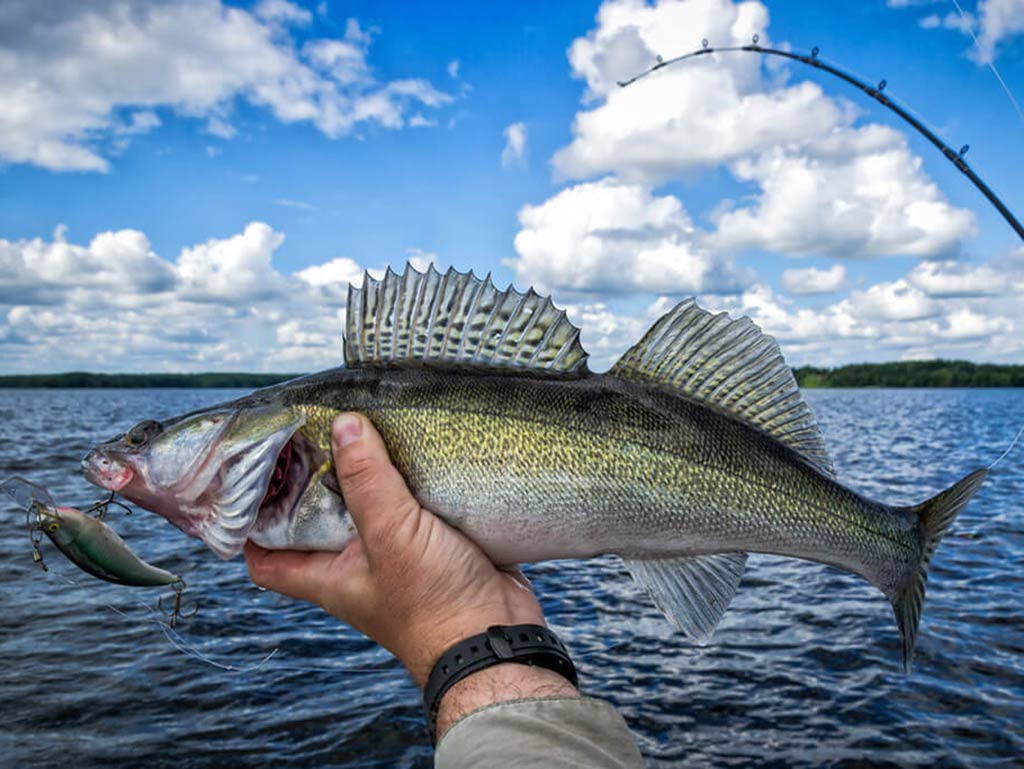
While Bass, both Largemouth and Smallmouth, are the primary targets for crankbait enthusiasts, these lures are also effective for species like Pike, Walleye, and even Trout in larger lakes and rivers. The key is to match the crankbait to the typical prey size and color of the area. This will ensure a natural presentation that’s hard for predators to ignore.
Spoons
With their basic yet brilliantly effective design, spoons have stood the test of time. They’re a staple in the world of freshwater fishing and anglers around the globe love them. Shaped like the concave part of a spoon, these lures catch light and water to create a distinctive, irresistible wobble that mimics the fluttering action of an injured bait fish. This appeals directly to the predatory instincts of game fish.
The Lure of the Wobble
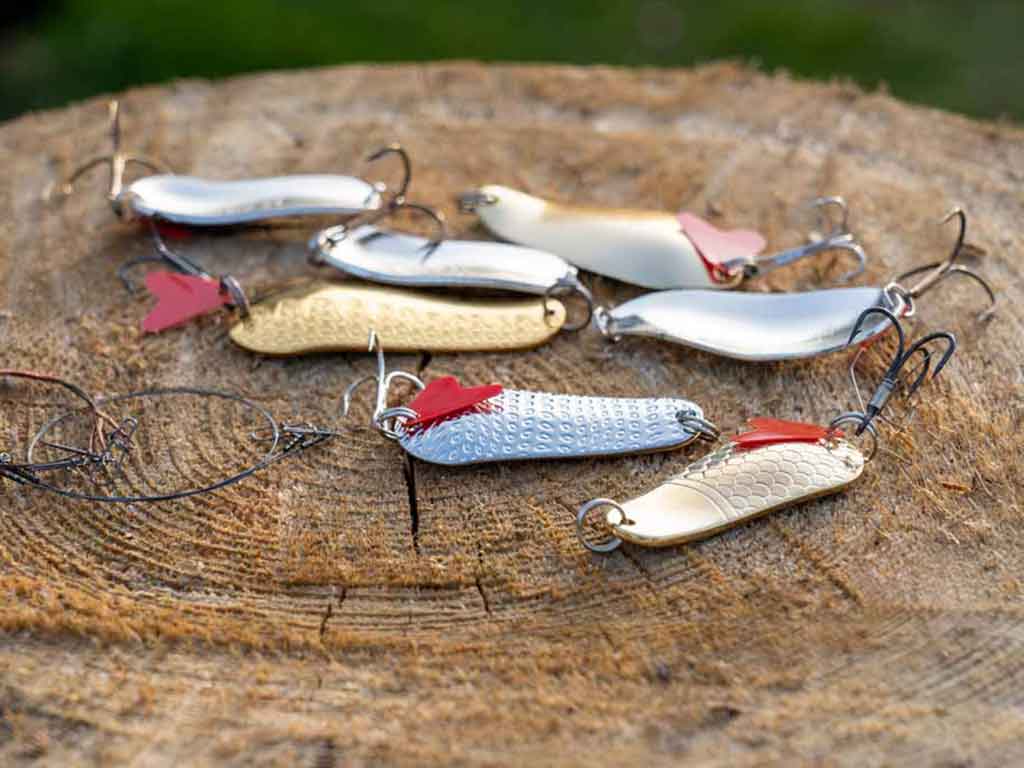
The secret to the spoon’s success lies in its simple action. As you retrieve the lure, it moves in a side-to-side wobble that varies with the speed of the retrieve. This erratic action, combined with the flash from its metallic surface, signals an easy meal to predatory fish. The trick to mastering spoon fishing is to experiment with retrieval speeds and rhythms until you find your winning combination.
When to Utilize Spoons
Spoons are exceptionally versatile and can be effective in a wide range of conditions. But they truly shine in clear to slightly stained waters where the fish are drawn to their reflective flash and distinct motion. They’re especially productive during the colder months when fish are deeper and less active. The spoon’s action can entice even the most lethargic fish to bite.
Targeting with Spoons
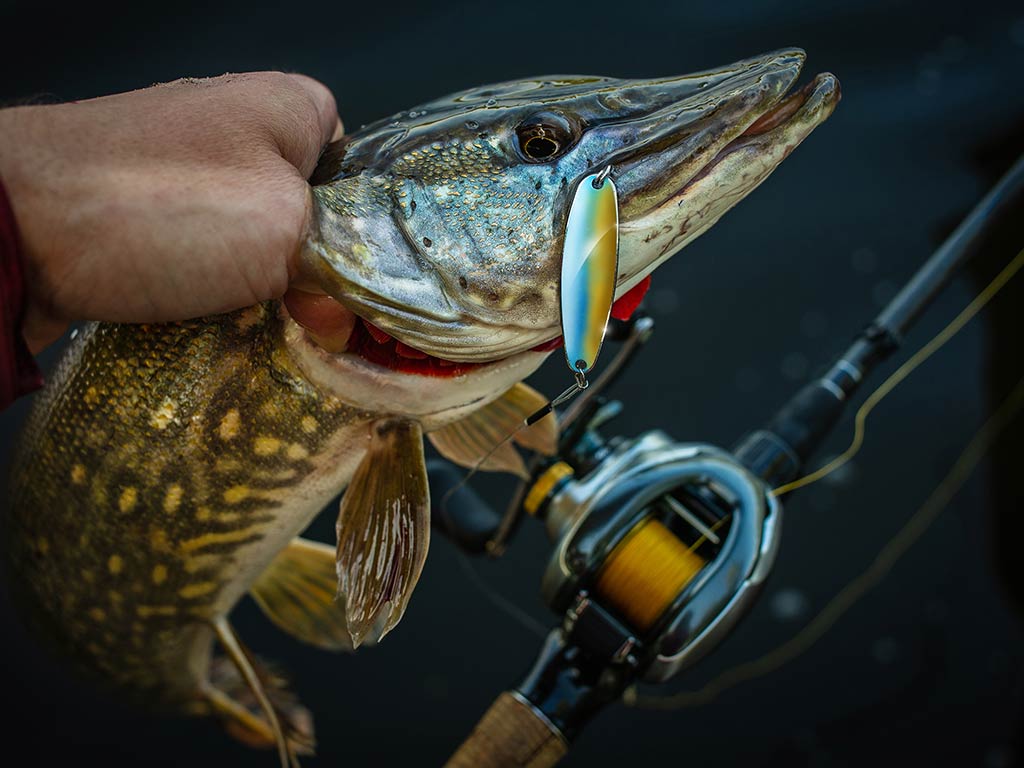
While Spoons are known for their effectiveness in targeting Bass, they’re equally productive for catching Pike, Walleye, and even Trout and Crappie. Larger spoons are great for Pike and Musky, while smaller sizes can be perfect for Bass and Trout, especially when they’re feeding on minnows or other small prey.
Buzzbaits
Buzzbaits take topwater excitement to another level. They combine noise, vibration, and surface disturbance to draw aggressive strikes from predatory fish. These lures feature a propeller-like blade that churns the water as you retrieve them, creating a buzzing sound that’s hard for fish to resist.
Creating a Commotion
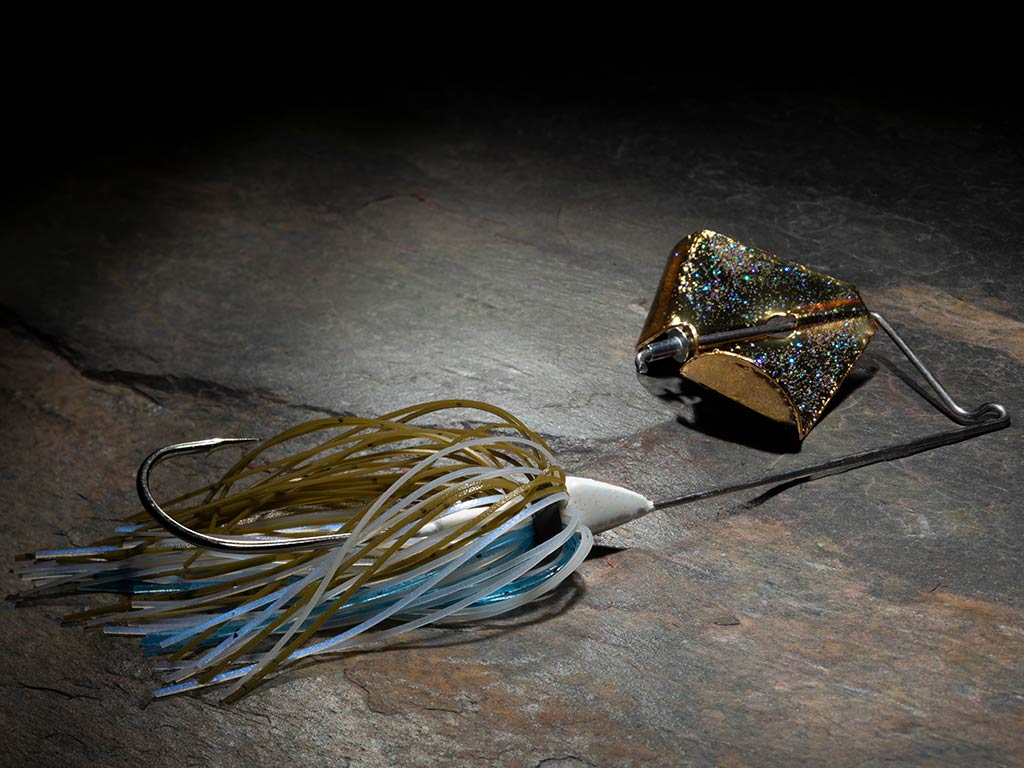
The effectiveness of buzzbaits hinges on their ability to mimic prey skimming across the water’s surface. The key to success is a fast, steady retrieval that keeps the blade spinning and the bait on the surface. This, in turn, causes a wake that predatory fish find irresistible. Anglers can add pauses or speed changes to the retrieve to mimic injured prey and trigger strikes from following fish.
Ideal Scenarios for Buzzbaits
Buzzbaits are most effective in warm, early morning or late evening conditions when predators are actively feeding in shallow waters. They excel in areas with heavy cover such as lily pads, grass, or submerged logs, where their noise can attract fish hidden beneath. The spring and summer, when fish are most aggressive and the vegetation is thickest, are prime times for buzzbait fishing.
Targeted Species
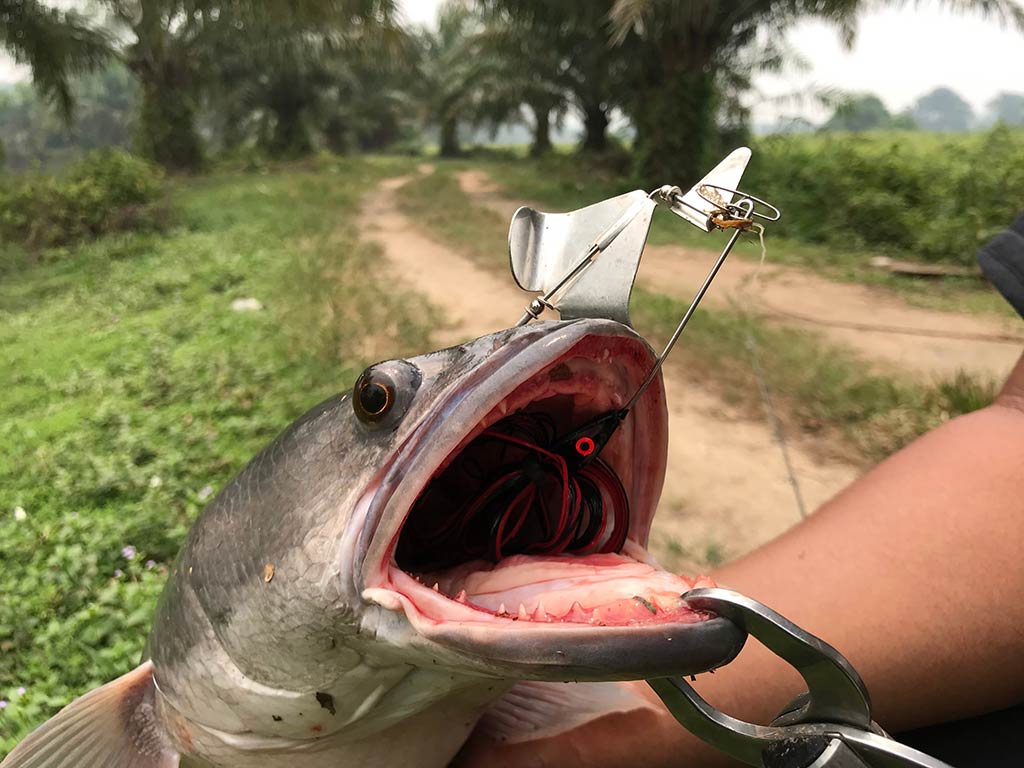
Largemouth Bass are the primary target for buzzbait enthusiasts. These fish are drawn to the lures’ surface action and commotion. However, other species such as Pike, Snakehead, and Musky can also be tempted, especially where they feed on surface prey.
Plugs
Last but certainly not least, we have plugs. They’re among the oldest and most versatile types of fishing lures, designed to mimic the look and movement of a bait fish. Available in a plethora of sizes, shapes, colors, and swimming actions, plugs can dive, float, sink, or remain suspended in the water column. This makes them adaptable to a wide range of fishing conditions and strategies.
Diving Deep into Plug Tactics
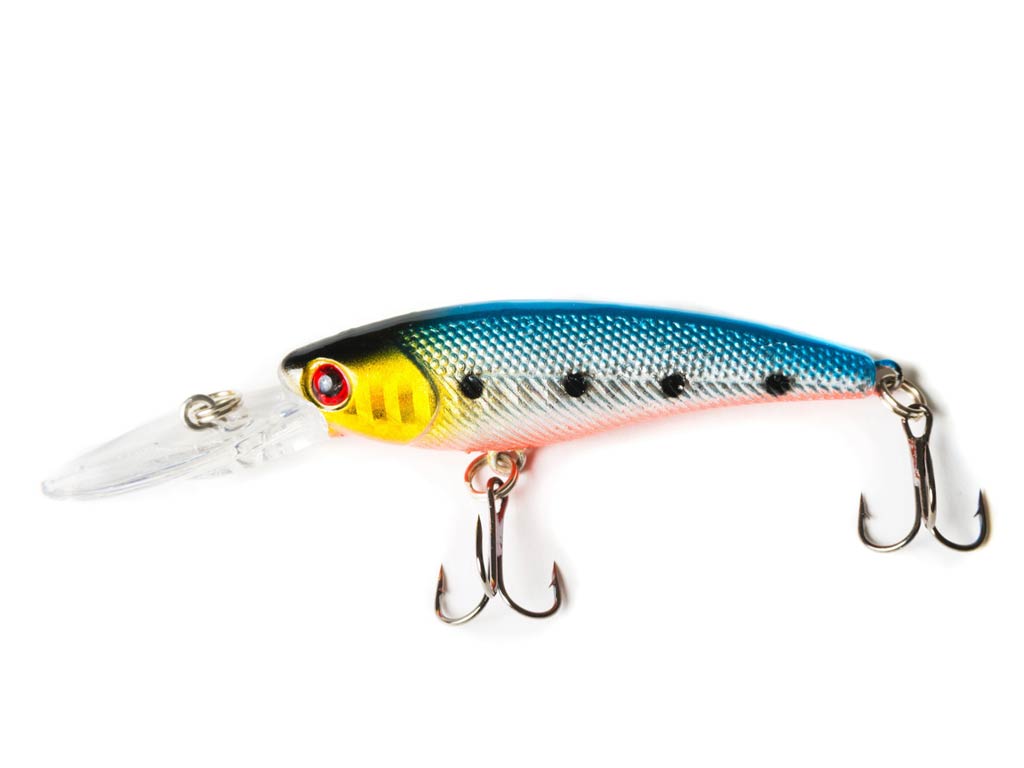
Plugs are engineered to perform specific actions in the water, from tight wiggles to wide, meandering swims. Their built-in action activates with a steady retrieve. Experienced anglers often incorporate pauses, jerks, and speed variations to mimic the erratic movements of injured prey. The diversity in plug designs allows for targeting fish at nearly any depth. From shallow-running models that skim the surface to deep-divers that probe deeper, you can try it all!
When and Where to Use Plugs
The versatility of plugs shines across seasons and times of day. That being said, they’re particularly effective during periods of active feeding. Think early morning or late evening. Plugs excel in environments with clear to moderately stained water, where their lifelike appearance and action can be easily seen by predatory fish. They’re also useful around structures like rocks, drop-offs, and weed edges. Their buoyancy and diving capabilities can navigate the contours without snagging.
Species Specifics
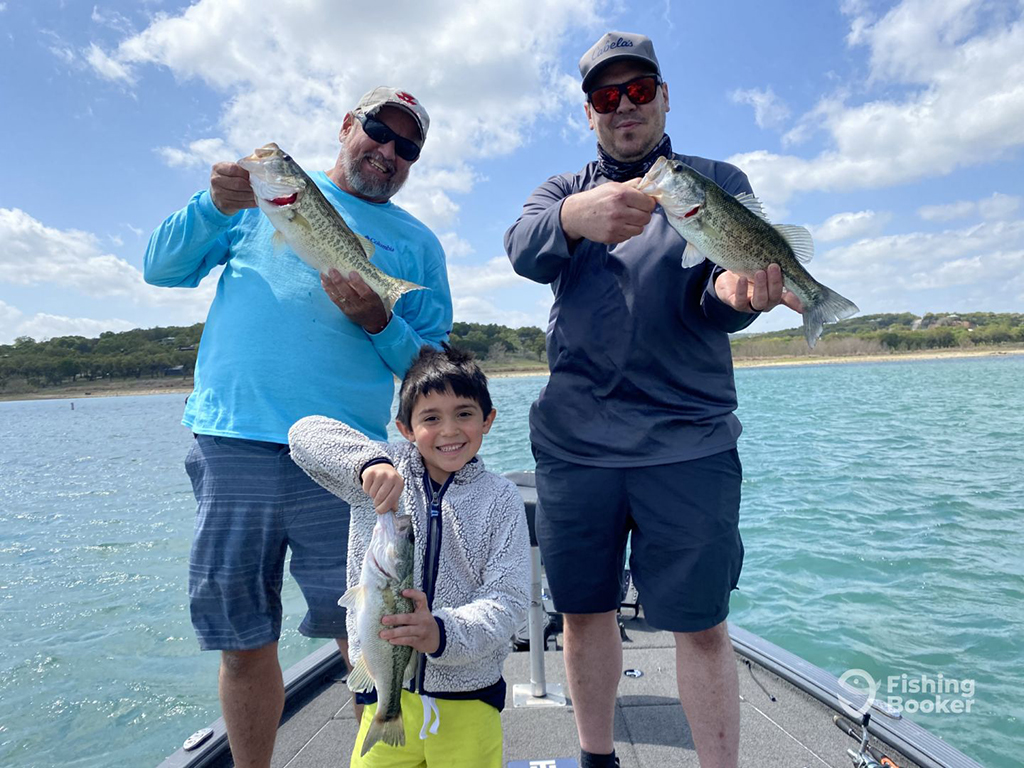
Photo courtesy of Redemptional Fishing And OutdoorsLargemouth and Smallmouth Bass are the quintessential targets for plug fishing. But these lures are also effective for a variety of other species. Pike and Walleye are attracted to larger, minnow-shaped plugs, Meanwhile, Trout and Salmon can be tempted by smaller versions that replicate the forage fish found in colder, flowing waters.
Freshwater Fishing Lures: Your Key to Success
At this point, we’ve thoroughly covered the most common types of freshwater fishing lures. From how you use them to how they function and entice strikes… All the way to choosing when and where to use them. You now have the foundation needed to use freshwater lures successfully. The only thing left to do is to get out there, hit the water, and experiment with some lures. Oh, and most importantly—have fun!
Don’t forget to drop us a line, though! Let us know about your favorite freshwater fishing lures in the comments section below. Have a question? We’ll be happy to answer!
The post Freshwater Fishing Lures: A Beginner’s Guide for 2024 appeared first on FishingBooker Blog.
https://fishingbooker.com/blog/freshwater-fishing-lures/
 CampingSurvivalistHuntingFishingExploringHikingPrivacy PolicyTerms And Conditions
CampingSurvivalistHuntingFishingExploringHikingPrivacy PolicyTerms And Conditions
